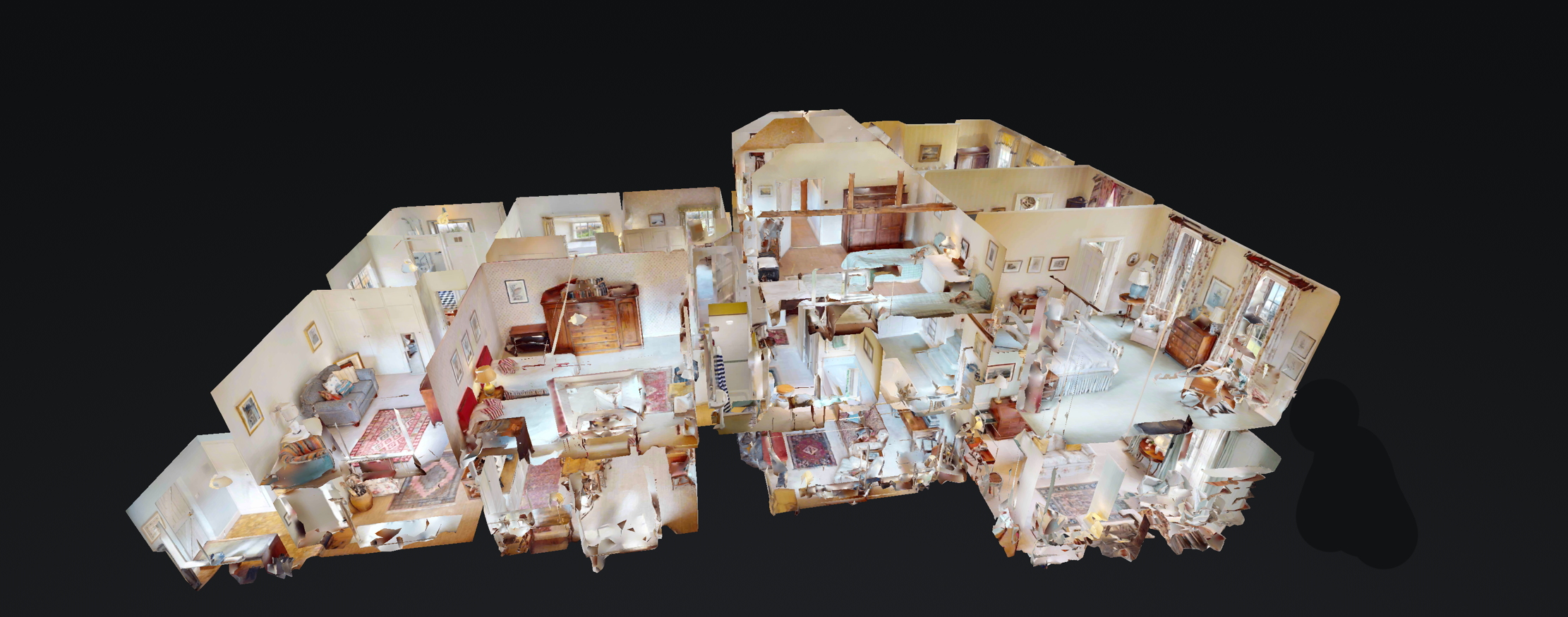
I’m standing in a quaint French village in the foothills of the Pyrenees at night. Looking around a corner, I spot an alleyway; I follow it along to find a little church. Thirty seconds later, I’m on the balcony of a four-storey mansion in Pacific Heights, San Francisco, California, US. The owners have installed an artificial putting green, so they can practise their six-footers as they look out over the Golden Gate Bridge. A putter leans against a wall.
Inside, I read the titles of the books on the coffee table and wonder if my own table would fit in the space, so I click to ‘ruler’ mode. A moment later, in an elegant Georgian rectory in Somerset, I check to see if my favourite painting will suit the landing wall. I could, should I so desire, see what brand of toothpaste the owners use. Yet I’ve not moved an inch from my desk in Sussex.
Virtual reality (VR) is clever stuff: pictures are taken throughout a house using a specialist 3D camera; these are then stitched together in cyberspace to allow potential buyers to click, tap and swipe their way through a property. Virtual tours can be taken on a normal computer screen, but they really come into their own with a VR headset such as Meta Quest 3, which allows the viewer literally to turn their head and look around a room as if they’re in it. Technology is no substitute for an in-person visit: the sense of scale can feel odd and images a little grainy. However, house-hunting from a distance isn’t easy — photographs can be deceptive — so VR has an important role, offering no hiding places.

VR technology has been around for a while, but it took off during the pandemic. ‘Come 2020, it became critical to keeping the market moving,’ says Guy Robinson, head of residential at Strutt & Parker. ‘The demands of covid are no longer relevant, but virtual viewings remain popular with sellers and are now considered a staple marketing tool, alongside floorplans and search portals.’ As well as offering convenience for buyers, VR viewings are great time savers; Strutt & Parker’s statistics show physical viewings have reduced by 27%.
‘They’re very effective at sifting out tyre-kickers and those wanting a snoop. That helps an agent bring through the most qualified buyers,’ explains Mr Robinson, who adds that a virtual viewing helps those who have already seen the house in person, even once an offer is accepted, providing ‘the opportunity to see how their furniture will fit or the ability to take family and friends on their own guided tour without having to leave their sofa’.
Adrian Passingham, who runs the Strutt & Parker Lewes office in East Sussex, agrees. ‘VR takes the pressure off having to remember every detail of a property,’ he says. ‘It either ends up spurring extra questions or helps buyers feel more at ease to put in an offer.’
‘We recently sold a home to a US buyer who struggled to justify the time spent travelling for multiple viewings. When the Manor House at Chiddingly Place, East Sussex, came up, he did multiple virtual tours first. He then arrived in the UK, viewed the property, made an offer and got back on a flight to America — all within 48 hours! The physical viewing can often be the last part of the process, merely confirmation that it is the right decision to buy.’
Exquisite houses, the beauty of Nature, and how to get the most from your life, straight to your inbox.

Credit: Getty Images/iStockphoto
Thatch under threat? Poor harvests, labour shortages and war are causing the industry to struggle
A new report from Historic England suggests that, despite high demand for the work, the profession is struggling.
Toby Keel is Country Life's Digital Director, and has been running the website and social media channels since 2016. A former sports journalist, he writes about property, cars, lifestyle, travel, nature.


